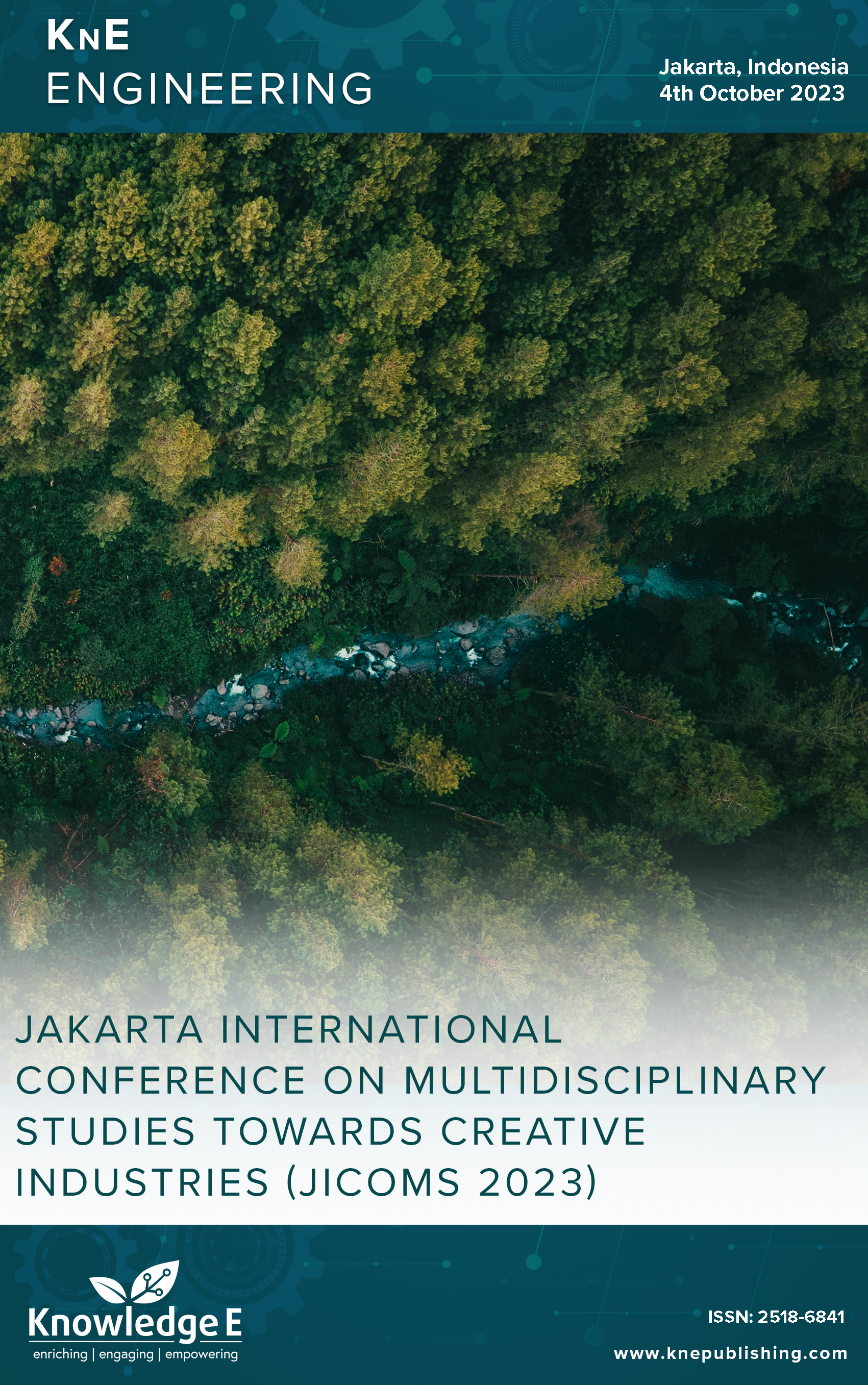Mobile-augmented Reality for Improving Student Entrepreneurial Mindset By Business Model Canvas
DOI:
https://doi.org/10.18502/keg.v6i1.15400Abstract
Modern humans’ existence is characterized by advances in information, communication, and technology. In the current digital era, augmented reality is one method that can be utilized to encourage learning. This study aims to establish how quickly The Business Model Canvas should be introduced through augmented reality to promote an entrepreneurial mindset for student. The methodology used is a survey of the literature, with a particular emphasis on cellular AR for learning and its use in cultural preservation. The exploratory mixed method is used. Researchers investigated data using a qualitative approach and analyzed it using a quantitative technique to generate measurements linked to the efficacy of augmented reality. Exploratory use is thought to be appropriate for developing new theories as well as testing existing ones. The method is called a systematic literature review (SLR). The SLR process includes the processes of problem formulation, information collecting and analysis, interpretation, arranging, and presentation. Using the Search Method Process (SP), data was gathered. Based on the findings of student trials, it is evident that the mobile-augmented reality produced increases student learning outcomes, which is consistent with the findings of Hsu, Wenting, and Hughes’ research. Therefore, mobile-augmented reality has the potential to boost interest in entrepreneurship education. Mobile-augmented reality is expected to increase student attention in entrepreneurship.
Keywords: mobile augmented reality, business model, entrepreneurial
References
[2] Davey T, Hannon P, Penaluna A. Entrepreneurship education and the role of universities in entrepreneurship: Introduction to the special issue. Ind High Educ. 2016;30(3):171–182.
[3] Kalogiannakis M, Nirgianaki GM, Papadakis S. Teaching magnetism to preschool children: The effectiveness of picture story reading. Early Childhood Educ J. 2018;46:535–546.
[4] Kalogiannakis M, Papadakis S. Pre-service kindergarten teachers’ acceptance of ’ScratchJr’ as a tool for learning and teaching computational thinking and Science education. The12th Conference of the European Science Education Research Association (ESERA), 2017. 21–25 p.
[5] Nambisan S. Digital entrepreneurship: Toward a digital technology perspective of entrepreneurship. Entrep Theory Pract. 2017;41(6):1029–1055.
[6] Dada O, Fogg H. Organiza1onal learning, entrepreneurial orienta1on, and the role of university engagement in SMEs. Int Small Bus J Res Entrep. 2014;34(1):86–104.
[7] Boocock G, Frank R, Warren L. Technology-based entrepreneurship education: Meeting educational and business objectives. Int J Entrep Innov. 2009;10(1):43–53.
[8] Yun JHJ, Won DK, Park K. Dynamics from open innovation to evolutionary change. J Open Innov Technol Mark Complex. 2016;2(2).
[9] Chen DR, Chen MY, Huang TC, Hsu WP. Developing a mobile learning system in Augmented Reality context. Int J Distrib Sens Networks. 2013;9(12).
[10] Hsu HP, Wenting Z, Hughes JE. Developing elementary students’ digital literacy through augmented reality creation: Insights from a longfrominal analysis of questionnaires, interviews, and projects. J Educ Comput Res. 2019;57(6):1400–1435.
[11] Gjøsæter T. Affordances in mobile Augmented Reality applications. Int J Interact. Mob Technol. 2014;8(4):45–55.
[12] Radosavljevic S, Radosavljevic V, Grgurovic B. The potential of implementing Augmented Reality into vocational higher education through mobile learning. Interact Learn Environ. 2020;28(4):404–418.
[13] Bower M, Howe C, McCredie N, Robinson A, Grover D. Augmented Reality in education – Cases, places and potentials. Educ Media Int. 2014;51(1):1–15.
[14] Elfeky IM, Elbyaly MYH. Developing skills of fashion design by Augmented Reality technology in higher education. Interact Learn Environ. 2018;29(1):17–32.
[15] Ahn S, Ko H, Yoo B. Webizing mobile Augmented Reality content. New Rev Hypermedia Mul1med. 2014;20(1):79–100.
[16] Papadakis S, Kalogiannakis M. Evaluating a course for teaching introductory programming with Scratch to pre-service kindergarten teachers. Int J Technol Enhanc Learn. 2019;11(3):231–246.
[17] Papadakis S. Evaluating a game-development approach to teach introductory programming concepts in secondary educa1on. Int J Technol Enhanc Learn. 2020;12(2):127–145.
[18] Vidal ECE, Ty JF, Caluya NR, Rodrigo MMT. MAGIS: Mobile augmented reality games for instructional support. Interact Learn Environ. 2018:1–13.
[19] Saudagar AKJ, Mohammad H. Augmented Reality mobile application for arabic text extraction, recognition and translation. J Stat Manag Syst. 2018;21(4):617–629.
[20] Chang HY, Hsu YS, Wu HK, Tsai CC. Students’ development of socio-scientific reasoning in a mobile Augmented Reality learning environment. Int J Sci Educ. 2018;40(12):1410–1431.
[21] Hsu HP, Wenting Z, Hughes JE. Developing elementary students’ digital literacy through augmented reality creation: Insights from a longfrominal analysis of questionnaires, interviews, and projects. J Educ Comput Res. 2019;57(6):1400–1435.
[22] Kounavis CD, Kasima1AE, Zamani ED. Enhancing the tourism experience through mobile Augmented Reality: Challenges and prospects. Int J Eng Bus Manag. 2012;4(1):1–6.


